Have you ever been to a Japanese supermarket and gone to the kitchenware section? Maybe you were looking for chopsticks or a good knife or a bamboo mat to roll your own sushi? I’ll bet you came across some strange looking paraphernalia that caught your eye, and you wondered, “what the heck is that for?” If you think some American kitchen gadgets are pretty strange, take a look at some of these inventions that were made specifically to do a task needed for Japanese cuisine. If you get serious about going Japanese, you gotta get one of these!
Rice Washer There’s no way you would know that the device above is for washing rice if you saw this tool all by itself. The plastic helix-shaped whisk even unfolds so it can be washed thoroughly from the inside-out. Not only does it save chapped hands, it’ll save your nails too, when faced with this almost daily chore in a typical Japanese household.
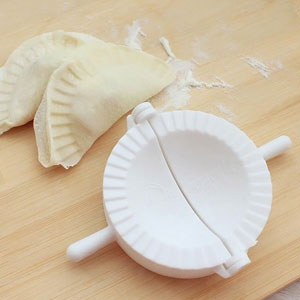 The Gyoza Press Homemade potstickers anyone? This clamp crimps the dough to make perfect little potstickers. Just lay the wafer-like dough on the press, fill with filling, and fold over. Beats making a lopsided one by hand, right?
The Gyoza Press Homemade potstickers anyone? This clamp crimps the dough to make perfect little potstickers. Just lay the wafer-like dough on the press, fill with filling, and fold over. Beats making a lopsided one by hand, right?
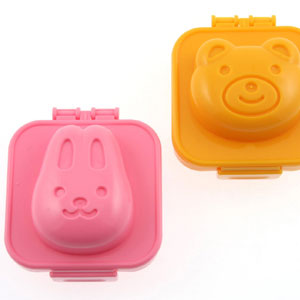 Egg Molds Create animal shaped eggs for your kids’ bento lunches! Boil an egg, place in mold when still hot, then close. Leave in cold water for a few minutes while your egg cools, and out pops a hard boiled egg bunny!
Egg Molds Create animal shaped eggs for your kids’ bento lunches! Boil an egg, place in mold when still hot, then close. Leave in cold water for a few minutes while your egg cools, and out pops a hard boiled egg bunny!
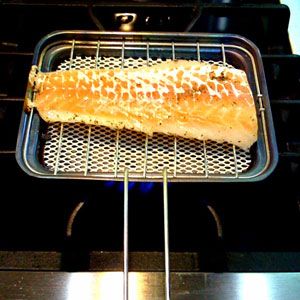 Fish Roaster This handheld grill is made to roast fish on your stove top, which many Japanese families do, instead of over a charcoal grill. It does a remarkably nice job–just keep your vent fan on high!
Fish Roaster This handheld grill is made to roast fish on your stove top, which many Japanese families do, instead of over a charcoal grill. It does a remarkably nice job–just keep your vent fan on high!
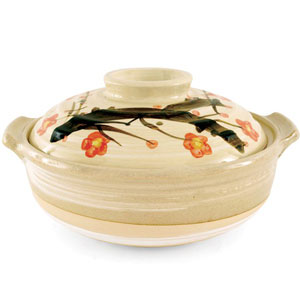 Donabe This earthenware pot is usually used to cook hot pot dinners on a hot plate at the dining table. These pots can be fairly expensive and very exquisite, especially the authentic Japanese ones handcrafted by artisans. They’re as much a tabletop centerpiece as they are a cooking vessel. Here’s a Chanko-nabe recipe from the Zojirushi site.
Donabe This earthenware pot is usually used to cook hot pot dinners on a hot plate at the dining table. These pots can be fairly expensive and very exquisite, especially the authentic Japanese ones handcrafted by artisans. They’re as much a tabletop centerpiece as they are a cooking vessel. Here’s a Chanko-nabe recipe from the Zojirushi site.
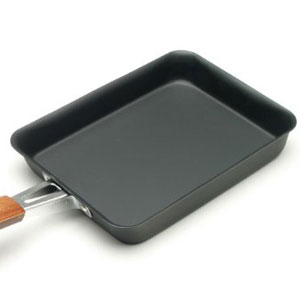 Omelet Pan This rectangular pan is used specifically to cook omelets in this shape. They are then rolled and sliced into the egg toppings for sushi.
Omelet Pan This rectangular pan is used specifically to cook omelets in this shape. They are then rolled and sliced into the egg toppings for sushi.
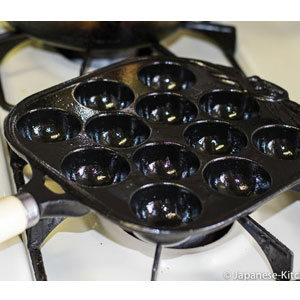 Takoyaki Maker No, this does not cook eggs, even though it looks like it. Each cavity in this unique pan makes a ball of batter flavored with chunks of octopus, known as takoyaki, or octopus balls. The doughy snack is a favorite of Osaka.
Takoyaki Maker No, this does not cook eggs, even though it looks like it. Each cavity in this unique pan makes a ball of batter flavored with chunks of octopus, known as takoyaki, or octopus balls. The doughy snack is a favorite of Osaka.
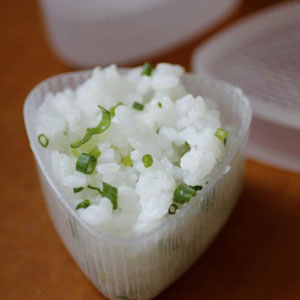 Onigiri Mold In the old days, homemakers used to be adept at shaping rice balls into triangular shapes without the aid of a mold. My Mom used to make them this way, and the one advantage was that she would dust her hands with salt so she could flavor our onigiri. But you can’t beat modern conveniences, can you?
Onigiri Mold In the old days, homemakers used to be adept at shaping rice balls into triangular shapes without the aid of a mold. My Mom used to make them this way, and the one advantage was that she would dust her hands with salt so she could flavor our onigiri. But you can’t beat modern conveniences, can you?
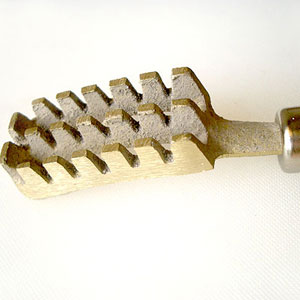 Fish Scaler You may never find one of these in an American kitchen, but many home cooks scale and clean their own fish in Japan, where it is often bought whole and fresh at the market.
Fish Scaler You may never find one of these in an American kitchen, but many home cooks scale and clean their own fish in Japan, where it is often bought whole and fresh at the market.
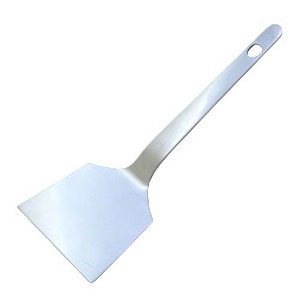 Okonomiyaki Spatulas These odd looking spatulas were created specifically for flipping okonomiyaki, sometimes known as Japanese style pancakes. Usually used in pairs so you can get underneath both sides of the pancake, you deftly flip the whole thing when one side is done cooking. Also used to slice it up into smaller pieces. You can find a Zojirushi recipe for okonomiyaki here.
Okonomiyaki Spatulas These odd looking spatulas were created specifically for flipping okonomiyaki, sometimes known as Japanese style pancakes. Usually used in pairs so you can get underneath both sides of the pancake, you deftly flip the whole thing when one side is done cooking. Also used to slice it up into smaller pieces. You can find a Zojirushi recipe for okonomiyaki here.
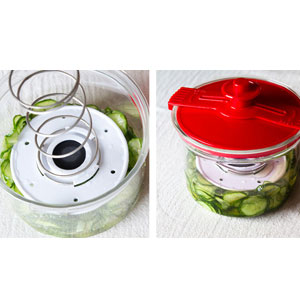 Pickling Press Japanese pickles, known as tsukemono, used to be made in large ceramic pots. The vegetables, whether cucumbers or cabbage or eggplant or other, was placed in a pot with fermenting ingredients and pressed down by the weight of a heavy stone to get the excess liquid out. These modern presses are much easier and don’t require heavy lifting.
Pickling Press Japanese pickles, known as tsukemono, used to be made in large ceramic pots. The vegetables, whether cucumbers or cabbage or eggplant or other, was placed in a pot with fermenting ingredients and pressed down by the weight of a heavy stone to get the excess liquid out. These modern presses are much easier and don’t require heavy lifting.
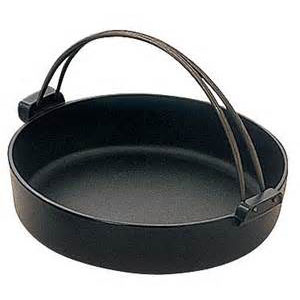 Sukiyaki Pot Another tabletop favorite at Japanese households, especially when celebrating special occasions, is sukiyaki. This cast iron pot keeps the broth bubbling as it continuously cooks over the hot plate at the dining table. Try Zojirushi’s sukiyaki recipe.
Sukiyaki Pot Another tabletop favorite at Japanese households, especially when celebrating special occasions, is sukiyaki. This cast iron pot keeps the broth bubbling as it continuously cooks over the hot plate at the dining table. Try Zojirushi’s sukiyaki recipe.
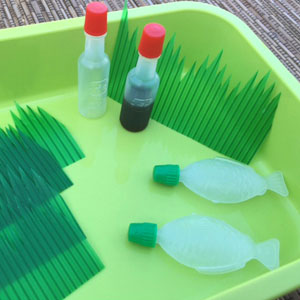 Bento Accessories You may think, “why do I need plastic grass?” but if you want to make authentic Japanese bento, you need plastic grass to separate the food inside your bento box. It’s used to keep the flavors from mingling and as a decoration. The tiny disposable vials are for soy sauce. Look, little fishies!
Bento Accessories You may think, “why do I need plastic grass?” but if you want to make authentic Japanese bento, you need plastic grass to separate the food inside your bento box. It’s used to keep the flavors from mingling and as a decoration. The tiny disposable vials are for soy sauce. Look, little fishies!
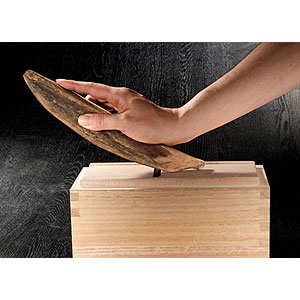 Katsuobushi Shaver A carpentry tool in the kitchen? No, but close to it. Cooks who take their umami seriously might insist on shaving their own dried bonito, otherwise known as katsuobushi, a prime ingredient of soup stock and source of the savory 5th taste known as umami. Smoked and dried bonito can be bought in chunks, which is then shaved into flakes with this wooden planing tool; or you can simply buy it by the bag at a grocery store. Katsuobushi is an important ingredient in Japanese cooking; see how to make your own soup stock here.
Katsuobushi Shaver A carpentry tool in the kitchen? No, but close to it. Cooks who take their umami seriously might insist on shaving their own dried bonito, otherwise known as katsuobushi, a prime ingredient of soup stock and source of the savory 5th taste known as umami. Smoked and dried bonito can be bought in chunks, which is then shaved into flakes with this wooden planing tool; or you can simply buy it by the bag at a grocery store. Katsuobushi is an important ingredient in Japanese cooking; see how to make your own soup stock here.
Guess what? Almost all of these tools can be found at your local Asian supermarkets if you have one, and if you don’t, I’ve seen them online too. Part of what makes cooking fun is getting to use all these gadgets, right?
Photos courtesy of: Kunjiadaren, Kotobuki, Andrew Yang, Miya Company, Japanese-Kitchen, TasteWithTheEyes, Okutsu, YouFoundKeke, Ikenaga, & Ninben

That rice washer looks great – I have incorporated a lot of Japanese cooking technique into my daily habits and I can admit I want a lot of these. I used to have some I got from Daiso and admittedly the quality was… not so good, so none of those things are still with us. What about suribachi/surikogi, otoshibuta, oroshigane?
Thanks for reading Jordan; that rice washer was purchased at a local supermarket called Mitsuwa.